Despite how it looks, it is always the female who chooses her mate.
~ Toni Lilly
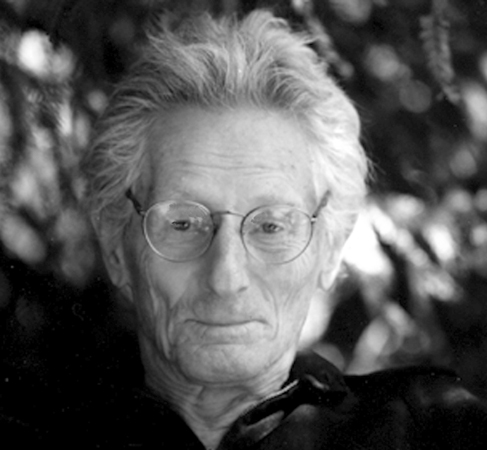 |
John Cunningham Lilly, M.D.
born 1915-01-06 in St. Paul, Minnesota, USA died 2001-09-30 in Los Angeles, California, USA of heart failure. Best known for his work researching dolphin intelligence and floatation tanks. |
 |
Born January 6, l915, in Saint Paul, Minnesota to Rachel and Richard Lilly, Lilly was educated at St. Paul Academy, California Institute of Technology, Dartmouth College Medical School and the University of Pennsylvania Medical School. During WWII (World War II), he conducted high altitude research at the Johnson Foundation for Medical Physics. After the war, he trained as a psychoanalyst.
While a Commander in the U.S. Public Health Service, Lilly worked at the National Institutes of Health, where he developed the isolation tank, which came to be known as the Lilly tank. In l959, he established the Communication Research Institute in the U.S. Virgin Islands to study the vocalizations of Bottlenose dolphins. The work later continued in San Francisco under the Aegis of the JANUS Project. He also established the Human Dolphin Foundation and worked with Samadhi Tank company to help popularize the isolation tank experience.
From the late sixties until he retired to Hawaii in l992, Dr. Lilly worked from his home lab in Malibu, California. He travelled extensively, teaching and lecturing at academic institutions, international conferences and growth centers like Esalen, where he was a long-standing artist in residence.
Dr. Lilly published over one hundred and twenty-five scientific papers, relating to his work in various fields, including Respiratory Physiology, Neurophysics, Neurophysiology, Psychiatry, interspecies communication and the nature of consciousness and the self. He also published nineteen popular books, including the influential Man and Dolphin(1961); Programming and Metaprogramming in the Human Biocomputer, (1972); , 1972 and the autobiographical The Scientist, A Metaphysical Autobiography (1978)
An unparalleled scientific visionary and explorer, Dr. Lilly has made significant contributions to psychology, brain research, computer theory, medicine, ethics and interspecies communication. His concepts, inventions, publications and articulated explorations have dramatically enhanced the quality of contemporary global culture. His work with dolphins and whales created a global awareness that lead to the enactment of the Marine Mammal Protection Act in 1972. Today, Dr. Lilly is considered the father of dolphin researchers.
In the 1940s, Dr. Lilly invented new types of capacitance manometers to aid in researches of human metabolism and invented gas concentration and flow meters to study respiration, gas mixing and pressure and altitude. In the ’40s and ’50s, Dr. Lilly was on the cutting edge of Neuroscience. He was the first to map the brain of chimpanzees, in the process inventing the Lilly Wave: an electrical pulse that could be used to stimulate the chimp’s brain without any damage. He also developed the twenty-five channel EEG (Electroencephalogram) moving relief maps of the electrical activity in the brain and dynamic iconic displays for researching pulse shapes and electrodes. His brain mapping with acoustic, motor and traveling waves predated today’s state of the art by fifty years. His research in electronic brain stimulation, dreams, schizophrenia and the neurophysiology of motivation — involving the identification of punishment and reward systems — were published in a number of psychiatric journals.
In conducting his brain research, Dr. Lilly developed an interest in large brain systems. This led him to work with dolphin communication. In the process he invented various spectral analyzers and hydro-phones, I don’t think that is true. He used them. He did not invent them. and pioneered the use of minicomputers with real time programming and original software.
While working at the National Institutes of Health on isolation, solitude and confinement, he invented the floatation tank, a tool to maximally isolate sensory stimulation to better understand what the mind does without exterior influence. NASA (National Aeronautics and Space Administration) and other important organization have used his research into sensory isolation. After ten years of tank research and while still in the employ of NIMH, he was given the responsibility to experiment with LSD (d-Lysergic Acid Diethylamide) in the tank. The results of that study were reported and published by that institute in his classic treatise, Programming and Metaprogramming in the Human Biocomputer. Like all his research, this was eventually made available to the public. Dr. Lilly considered this documentation his most original work. This is where he first published his famous statement
In the province of the mind, what one believes to be true is true or becomes true, within certain limits to be found experientially and experimentally. These limits are further beliefs to be transcended. In the mind, there are no limits.Dr. Lilly’s last physician remarked with awe that John Lilly is the only person he knows of whose least accomplishment was becoming a Medical Doctor.
~ Dr. John Cunningham Lilly (1915-01-06 2001-09-30 age:86)
He has sown the seeds of several future scientific revolutions. Dr. Lilly leaves us with the possibility of a theory of internal realities. He developed the hardware/software model of the human brain/mind decades before the computer became a popular metaphor for the human brain. He worked towards a recognition of possibilities for solid state intelligence and planetary consciousness. He explored and theorized about the potential importance of Einstein, Podalski, Rosen, (PDR) and Bell’s Theorem in quantum computers and teleportation. He initiated worldwide efforts at interspecies communications with large-brained dolphins, advocating United Nations protection and representation for the Cetacean Nation.
Devoted to a philosophical quest for the nature of reality and mind, Dr. Lilly pursued a brilliant academic career among the scientific leaders of the day. He has lived in the company of associates and intimates including Nobel physicists Richard Feynman and Robert Milliken, philosophers Buckminster Fuller, Aldous Huxley and Alan Watts, psychotherapy pioneers R.D. Laing, Fritz Perls and Oscar Janiger, eclectic spiritual and psychological interpreters Oscar Ichazo, Baba Ram Dass, Timothy Leary, Robert Anton Wilson and a host of luminaries, inventors, political figures, writers and Hollywood celebrities.
One of the twentieth century’s foremost scientific pioneers John Lilly has been a relentless adventurer whose persona as student of the unexpected has resulted in astonishing insights into what it means to be a human being in an ever more mysterious universe.
He is survived by his first wife, Mary Lilly, of Haiku, Hawaii; a brother, David Lilly, of St. Paul, Minn.; two sons, John Jr., of Zacatecas, Mexico and Charles of Haiku, HI; a daughter Cynthia Cantwell of Paradise, Calif.; and adopted children, Pamela Christine, daughter of his second wife, Elisabeth C. (Bjerg) MacRobbie; Nina Carnesi, daughter of his third wife, Antoinetta Lilly. (Ficarotta) Oshman; Lisa Lilly of Malibu, CA; Barbara Clarke-Lilly of Kihei, HI and Philip H. Bailey of Kula, HI.
John C. Lilly Memorial Celebration will be taking place Friday, October 5, at Will Geer’s Theatricum Botanicum, 1419 North Topanga Canyon Blvd., Topanga, CA (California) 90290 2:30pm arrival. Memorial in Amphitheater followed by reception in the surrounding garden. Seating for 300 only — leaving the grounds at 6pm.
In lieu of flowers please make your tax-deductible donation to the Association for Cultural Evolution, POB (Post Office Box) 2382, Mill Valley, CA 94942. This organization was established in 1990 as a not-for-profit Educational 501 c3 — for the purpose of archiving, preserving and making available primary source material of timeless cultural importance by Founding member of the Board of Directors, John C. Lilly, M.D, along with four other notable directors
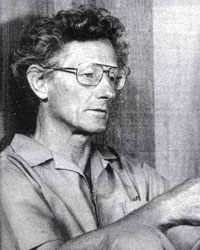
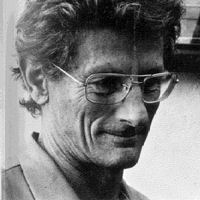
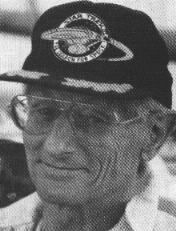
In the province of the mind what one believes to be true, either is true or becomes true within certain limits. These limits are to be found experimentally and experientially. When so found these limits turn out to be further beliefs to be transcended. In the province of the mind there are no limits.I read hundreds of books trying to make sense of my weird experiences. Dr. Lilly seemed to have some understanding, though his experiences were mostly drug induced and he seemed to take as cosmic absolutes what appeared to me to be some very arbitrary classification schemes. We shared an interest in dolphins and floatation tanks. I went to see him and his wife Toni at Esalen where, among other things, he introduced me to Esalen massage and Gregory Bateson, in person. I later went to work on his project Janus communication-with-dolphins project in 1979. I did the software interface between the PDP-11 with its Sd350 spectrum analyser and the Apple ][ and also delphinic Etch-a-Sketch.
~ Dr. John Cunningham Lilly (1915-01-06 2001-09-30 age:86)
There were so many adventures packed into those weeks, including making Werner Erhard, of EST (Erhard Seminar Training) take off all his clothes and meeting one of the people who built the Gossamer Condor. I was always in awe of John, but I still called him by his first name.
I thought of Toni as a second mother even though we only spent a total of about five weeks together. Toni was so supportive and loving. She made all John’s people decisions for him and kept him grounded. I could hardly imagine John being able to carry on after she died. However, I was happy to learn that after her death, John was surrounded in Hawaii by good people. He encouraged musicians and creative sympathetic types to visit.
Toni’s sage advice to me was, When you are feeling totally spaced out during a conversation with someone, just nod in agreement now and then. They will never know.
John was such a kid. He could drive his coworkers crazy with his manic enthusiasm. He was shy with people, which you would never guess from the candour of his books.
I once asked John if he was enlightened. He asked what my definition was. I said free of addictions in the Ken Keyes sense, no attachments. He grinned and said that he had been given a set of LEDs (Light-Emitting Diodes) that flashed to wear on his head saying I’m enlightened.
John had a big impact on me. I constructed a floatation tank. I did an HIV drug fast almost to the point of death to protest the Makah whale sacrifices. I got arrested. I have told hundreds of people about my experiences with Joe and Rose, the two adolescent dolphins who worked with us on Project Janus at Marineworld in Redwood City. I still cherish a faded Human Dolphin Foundation T-shirt John gave me.
I never saw either of them again after 1979. I am awaiting something spectacular in the way of a ceremony from the cetacean community when they hear the news. He was their main ally in the human species. I experienced one miracle just after he died, but before I learned of his death. I went to my computer and someone had brought up an essay on cetacean intelligence I had written some years ago, using the Opera browser which I had stopped using about a month ago which I had updated about a week earlier. I know of no one but me who has access to my apartment. At the time, I assumed it was hackers trying to mess with my head, but perhaps it was ECCO (Earth Coincidence Control Office) at work again.
The people who were there at the time I was included: Jennifer Yankee Caulfield and her boyfriend Tom, Peter, John Kert, Toni Lilly and a guy who helped construct the gossamer condor.
Cosmic Love is absolutely Ruthless and Highly Indifferent: it teaches its lessons whether you like/dislike them or not.
~ Dr. John Cunningham Lilly (1915-01-06 2001-09-30 age:86)
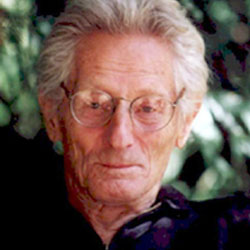
I call God ECCO. It’s much more satisfying to call it that. A lot of people accept this and they don’t know that they’re just talking about God. I finally found a God that was big enough. As the astronomer said to the Minister, My God’s astronomical. The Minister said, How can you relate to something so big? The astronomer said, Well, that isn’t the problem, your God’s too small!
~ Dr. John Cunningham Lilly (1915-01-06 2001-09-30 age:86)
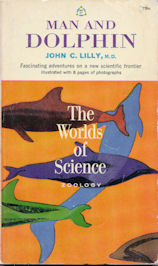
Man and Dolphin 1961. Library of Congress Catalog Number 61-9528. No ISBN (International Standard Book Number).
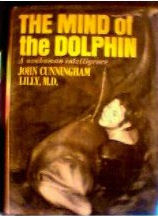 |
recommend book⇒The Mind of the Dolphin: A Nonhuman Intelligence | |||||||||||||||||||||||||||||||||||||||||||||||||||||||
| by | Dr. John Cunningham Lilly | 978-0-89556-119-0 | paperback | |||||||||||||||||||||||||||||||||||||||||||||||||||||
|---|---|---|---|---|---|---|---|---|---|---|---|---|---|---|---|---|---|---|---|---|---|---|---|---|---|---|---|---|---|---|---|---|---|---|---|---|---|---|---|---|---|---|---|---|---|---|---|---|---|---|---|---|---|---|---|---|
| birth | 1915-01-06 2001-09-30 age:86 | 978-0-385-02543-0 | hardcover | |||||||||||||||||||||||||||||||||||||||||||||||||||||
| publisher | Doubleday | |||||||||||||||||||||||||||||||||||||||||||||||||||||||
| published | 1967-01 | |||||||||||||||||||||||||||||||||||||||||||||||||||||||
| written 1967. Also available in paperback without an ISBN with a checkerboard cover. | ||||||||||||||||||||||||||||||||||||||||||||||||||||||||
| ||||||||||||||||||||||||||||||||||||||||||||||||||||||||
| Greyed out stores probably do not have the item in stock. Try looking for it with a bookfinder. | ||||||||||||||||||||||||||||||||||||||||||||||||||||||||
 |
recommend book⇒Programming and Metaprogramming in the Human Biocomputer | |||||||||||||||||||||||||||||||||||||||||||||||||||||||
| by | Dr. John Cunningham Lilly | 978-0-517-52757-3 | paperback | |||||||||||||||||||||||||||||||||||||||||||||||||||||
|---|---|---|---|---|---|---|---|---|---|---|---|---|---|---|---|---|---|---|---|---|---|---|---|---|---|---|---|---|---|---|---|---|---|---|---|---|---|---|---|---|---|---|---|---|---|---|---|---|---|---|---|---|---|---|---|---|
| birth | 1915-01-06 2001-09-30 age:86 | |||||||||||||||||||||||||||||||||||||||||||||||||||||||
| publisher | Three Rivers | |||||||||||||||||||||||||||||||||||||||||||||||||||||||
| published | 1987-05-27 | |||||||||||||||||||||||||||||||||||||||||||||||||||||||
| written 1972 | ||||||||||||||||||||||||||||||||||||||||||||||||||||||||
| ||||||||||||||||||||||||||||||||||||||||||||||||||||||||
| Greyed out stores probably do not have the item in stock. Try looking for it with a bookfinder. | ||||||||||||||||||||||||||||||||||||||||||||||||||||||||
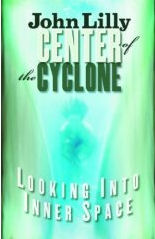 |
recommend book⇒The Center of the Cyclone | |||||||||||||||||||||||||||||||||||||||||||||||||||||||
| by | Dr. John Cunningham Lilly | 978-1-57951-038-1 | paperback | |||||||||||||||||||||||||||||||||||||||||||||||||||||
|---|---|---|---|---|---|---|---|---|---|---|---|---|---|---|---|---|---|---|---|---|---|---|---|---|---|---|---|---|---|---|---|---|---|---|---|---|---|---|---|---|---|---|---|---|---|---|---|---|---|---|---|---|---|---|---|---|
| birth | 1915-01-06 2001-09-30 age:86 | 978-1-57951-103-6 | eBook | |||||||||||||||||||||||||||||||||||||||||||||||||||||
| publisher | Ronin | B00292BLZU | kindle | |||||||||||||||||||||||||||||||||||||||||||||||||||||
| published | 1985-03-28 | |||||||||||||||||||||||||||||||||||||||||||||||||||||||
| written 1972 | ||||||||||||||||||||||||||||||||||||||||||||||||||||||||
| ||||||||||||||||||||||||||||||||||||||||||||||||||||||||
| Greyed out stores probably do not have the item in stock. Try looking for it with a bookfinder. | ||||||||||||||||||||||||||||||||||||||||||||||||||||||||
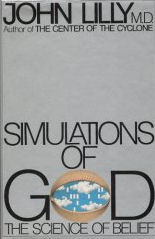 |
recommend book⇒Simulations of God: The Science of Belief | |||||||||||||||||||||||||||||||||||||||||||||||||||||||
| by | Dr. John Cunningham Lilly | 978-0-553-02442-5 | paperback | |||||||||||||||||||||||||||||||||||||||||||||||||||||
|---|---|---|---|---|---|---|---|---|---|---|---|---|---|---|---|---|---|---|---|---|---|---|---|---|---|---|---|---|---|---|---|---|---|---|---|---|---|---|---|---|---|---|---|---|---|---|---|---|---|---|---|---|---|---|---|---|
| birth | 1915-01-06 2001-09-30 age:86 | 978-0-671-21981-9 | hardcover | |||||||||||||||||||||||||||||||||||||||||||||||||||||
| publisher | Simon & Schuster | |||||||||||||||||||||||||||||||||||||||||||||||||||||||
| published | 1975-06-04 | |||||||||||||||||||||||||||||||||||||||||||||||||||||||
| written 1975 | ||||||||||||||||||||||||||||||||||||||||||||||||||||||||
| ||||||||||||||||||||||||||||||||||||||||||||||||||||||||
| Greyed out stores probably do not have the item in stock. Try looking for it with a bookfinder. | ||||||||||||||||||||||||||||||||||||||||||||||||||||||||
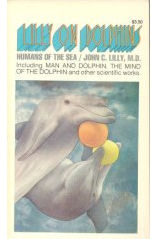 |
recommend book⇒Lilly On Dolphins | |||
| by | Dr. John Cunningham Lilly | 978-0-385-11037-2 | paperback | |
|---|---|---|---|---|
| birth | 1915-01-06 2001-09-30 age:86 | |||
| publisher | Doubleday | |||
| published | 1975-10 | |||
| This book is not in stock at any of the major online bookstores. Try looking for it with a bookfinder. written 1975 | ||||
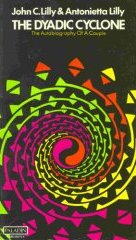 |
recommend book⇒The Dyadic Cyclone | |||
| by | Dr. John Cunningham Lilly, with Toni Lilly | 978-0-586-08276-8 | paperback | |
|---|---|---|---|---|
| birth | 1915-01-06 2001-09-30 age:86 | 978-0-671-22218-5 | hardcover | |
| publisher | Paladin | |||
| published | 1978 | |||
| written 1976 | ||||
| Greyed out stores probably do not have the item in stock. Try looking for it with a bookfinder. | ||||
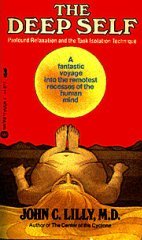 |
recommend book⇒The Deep Self | |||
| by | Dr. John Cunningham Lilly | 978-0-446-33023-7 | paperback | |
|---|---|---|---|---|
| birth | 1915-01-06 2001-09-30 age:86 | 978-0-89556-505-1 | eBook | |
| publisher | Warner | |||
| published | 1981-06 | |||
| written 1977 | ||||
| Greyed out stores probably do not have the item in stock. Try looking for it with a bookfinder. | ||||
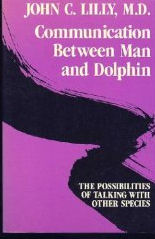 |
recommend book⇒Communication Between Man and Dolphin | |||||||||||||||||||||||||||||||||||||||||||||||||||||||
| by | Dr. John Cunningham Lilly | 978-0-517-56564-3 | paperback | |||||||||||||||||||||||||||||||||||||||||||||||||||||
|---|---|---|---|---|---|---|---|---|---|---|---|---|---|---|---|---|---|---|---|---|---|---|---|---|---|---|---|---|---|---|---|---|---|---|---|---|---|---|---|---|---|---|---|---|---|---|---|---|---|---|---|---|---|---|---|---|
| birth | 1915-01-06 2001-09-30 age:86 | 978-0-517-53036-8 | hardcover | |||||||||||||||||||||||||||||||||||||||||||||||||||||
| publisher | Three Rivers | |||||||||||||||||||||||||||||||||||||||||||||||||||||||
| published | 1987-05-27 | |||||||||||||||||||||||||||||||||||||||||||||||||||||||
| written 1978. | ||||||||||||||||||||||||||||||||||||||||||||||||||||||||
| ||||||||||||||||||||||||||||||||||||||||||||||||||||||||
| Greyed out stores probably do not have the item in stock. Try looking for it with a bookfinder. | ||||||||||||||||||||||||||||||||||||||||||||||||||||||||
 |
recommend book⇒The Scientist, A Metaphysical Autobiography | |||||||||||||||||||||||||||||||||||||||||||||||||||||||
| by | Dr. John Cunningham Lilly | 978-0-914171-72-0 | paperback | |||||||||||||||||||||||||||||||||||||||||||||||||||||
|---|---|---|---|---|---|---|---|---|---|---|---|---|---|---|---|---|---|---|---|---|---|---|---|---|---|---|---|---|---|---|---|---|---|---|---|---|---|---|---|---|---|---|---|---|---|---|---|---|---|---|---|---|---|---|---|---|
| birth | 1915-01-06 2001-09-30 age:86 | |||||||||||||||||||||||||||||||||||||||||||||||||||||||
| publisher | Ronin | |||||||||||||||||||||||||||||||||||||||||||||||||||||||
| published | 1996-10-23 | |||||||||||||||||||||||||||||||||||||||||||||||||||||||
| written 1988. | ||||||||||||||||||||||||||||||||||||||||||||||||||||||||
| ||||||||||||||||||||||||||||||||||||||||||||||||||||||||
| Greyed out stores probably do not have the item in stock. Try looking for it with a bookfinder. | ||||||||||||||||||||||||||||||||||||||||||||||||||||||||
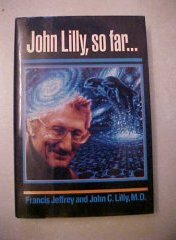 |
recommend book⇒John Lilly, So Far | |||
| by | Dr. John Cunningham Lilly, with Francis Jeffrey | 978-0-87477-613-3 | paperback | |
|---|---|---|---|---|
| birth | 1915-01-06 2001-09-30 age:86 | 978-0-87477-539-6 | hardcover | |
| publisher | Jeremy P. Tarcher | |||
| published | 1990-12-01 | |||
| written 1990 | ||||
| Greyed out stores probably do not have the item in stock. Try looking for it with a bookfinder. | ||||
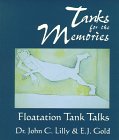 |
recommend book⇒Tanks for the Memories: Floatation Tank Talks | |||||||||||||||||||||||||||||||||||||||||||||||||||||||
| by | Dr. John Cunningham Lilly | 978-0-89556-071-1 | paperback | |||||||||||||||||||||||||||||||||||||||||||||||||||||
|---|---|---|---|---|---|---|---|---|---|---|---|---|---|---|---|---|---|---|---|---|---|---|---|---|---|---|---|---|---|---|---|---|---|---|---|---|---|---|---|---|---|---|---|---|---|---|---|---|---|---|---|---|---|---|---|---|
| birth | 1915-01-06 2001-09-30 age:86 | 978-0-89556-508-2 | eBook | |||||||||||||||||||||||||||||||||||||||||||||||||||||
| publisher | Gateways | B004C04RI0 | kindle | |||||||||||||||||||||||||||||||||||||||||||||||||||||
| published | 1996-06-01 | |||||||||||||||||||||||||||||||||||||||||||||||||||||||
| written 1996 | ||||||||||||||||||||||||||||||||||||||||||||||||||||||||
| ||||||||||||||||||||||||||||||||||||||||||||||||||||||||
| Greyed out stores probably do not have the item in stock. Try looking for it with a bookfinder. | ||||||||||||||||||||||||||||||||||||||||||||||||||||||||
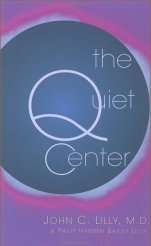 |
recommend book⇒The Quiet Center | |||
| by | Dr. John Cunningham Lilly, Phillip Bailey Lilly, forward by Tom Robbins | 978-1-57951-059-6 | paperback | |
|---|---|---|---|---|
| birth | 1915-01-06 2001-09-30 age:86 | 978-1-57951-046-6 | eBook | |
| publisher | Ronin | B006QRYQ06 | kindle | |
| published | 2003-05-09 | |||
| Each one of us is far more advanced, far more consciously aware, far more intelligent than we conceive of our Selves as being. | ||||
| Greyed out stores probably do not have the item in stock. Try looking for it with a bookfinder. | ||||
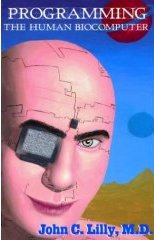 |
recommend book⇒Programming the Human Biocomputer | |||||||||||||||||||||||||||||||||||||||||||||||||||||||
| by | Dr. John Cunningham Lilly | 978-1-57951-065-7 | paperback | |||||||||||||||||||||||||||||||||||||||||||||||||||||
|---|---|---|---|---|---|---|---|---|---|---|---|---|---|---|---|---|---|---|---|---|---|---|---|---|---|---|---|---|---|---|---|---|---|---|---|---|---|---|---|---|---|---|---|---|---|---|---|---|---|---|---|---|---|---|---|---|
| birth | 1915-01-06 2001-09-30 age:86 | 978-1-57951-139-5 | eBook | |||||||||||||||||||||||||||||||||||||||||||||||||||||
| publisher | Ronin | B004H3W3VK | kindle | |||||||||||||||||||||||||||||||||||||||||||||||||||||
| published | 2004-04-29 | |||||||||||||||||||||||||||||||||||||||||||||||||||||||
| written in the 1970s. | ||||||||||||||||||||||||||||||||||||||||||||||||||||||||
| ||||||||||||||||||||||||||||||||||||||||||||||||||||||||
| Greyed out stores probably do not have the item in stock. Try looking for it with a bookfinder. | ||||||||||||||||||||||||||||||||||||||||||||||||||||||||
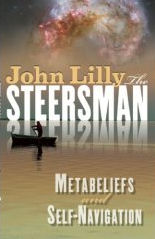 |
recommend book⇒The Steersman: Metabeliefs and Self-Navigation | |||||||||||||||||||||||||||||||||||||||||||||||||||||||
| by | Dr. John Cunningham Lilly | 978-1-57951-037-4 | paperback | |||||||||||||||||||||||||||||||||||||||||||||||||||||
|---|---|---|---|---|---|---|---|---|---|---|---|---|---|---|---|---|---|---|---|---|---|---|---|---|---|---|---|---|---|---|---|---|---|---|---|---|---|---|---|---|---|---|---|---|---|---|---|---|---|---|---|---|---|---|---|---|
| birth | 1915-01-06 2001-09-30 age:86 | 978-1-57951-128-9 | eBook | |||||||||||||||||||||||||||||||||||||||||||||||||||||
| publisher | Ronin | B002FB6OY8 | kindle | |||||||||||||||||||||||||||||||||||||||||||||||||||||
| published | 2006-07-28 | |||||||||||||||||||||||||||||||||||||||||||||||||||||||
| Probably some repackaging of works written much ealier. | ||||||||||||||||||||||||||||||||||||||||||||||||||||||||
| ||||||||||||||||||||||||||||||||||||||||||||||||||||||||
| Greyed out stores probably do not have the item in stock. Try looking for it with a bookfinder. | ||||||||||||||||||||||||||||||||||||||||||||||||||||||||
This page is posted |
http://mindprod.com/animalrights/obitlilly.html | |
Optional Replicator mirror
|
J:\mindprod\animalrights\obitlilly.html | |
 |
Please read the feedback from other visitors,
or send your own feedback about the site. Contact Roedy. Please feel free to link to this page without explicit permission. | |
| Canadian
Mind
Products
IP:[65.110.21.43] Your face IP:[216.73.216.108] |
| |
| Feedback |
You are visitor number | |